Facts on hep c. Hepatitis C: Causes, Symptoms, and Prevention – A Comprehensive Guide
What is hepatitis C and how is it transmitted. How can you recognize the symptoms of hepatitis C. Who should get tested for hepatitis C and what are the treatment options. How can you prevent hepatitis C infection.
Understanding Hepatitis C: An Overview of the Viral Infection
Hepatitis C is a liver infection caused by the hepatitis C virus (HCV). It’s one of several types of viral hepatitis that can affect the liver, alongside hepatitis A and B. Unlike its counterparts, there is no vaccine available for hepatitis C, making prevention and early detection crucial.
The hepatitis C virus primarily targets the liver, causing inflammation that can lead to serious complications if left untreated. While some individuals may clear the virus without treatment, many develop chronic infections that can persist for years, often without noticeable symptoms.
The Silent Nature of Hepatitis C
Why is hepatitis C often called a “silent” disease? Many people infected with hepatitis C remain asymptomatic for years or even decades. This characteristic makes it particularly dangerous, as liver damage can progress unnoticed until it reaches advanced stages. Regular screening for at-risk individuals is therefore essential for early detection and treatment.

Transmission Routes: How Hepatitis C Spreads
Understanding how hepatitis C spreads is crucial for prevention. The virus is primarily transmitted through blood-to-blood contact with an infected person. Here are the main routes of transmission:
- Sharing needles or other equipment for injecting drugs
- Receiving blood transfusions or organ transplants before 1992 (when widespread screening began)
- Mother-to-child transmission during childbirth
- Sharing personal items that may have blood on them (e.g., razors, toothbrushes)
- Getting tattoos or body piercings with non-sterile equipment
- Healthcare-associated infections due to poor infection control
- Sexual transmission (rare, but possible, especially in certain high-risk situations)
It’s important to note that hepatitis C is not spread through casual contact such as hugging, kissing, or sharing food and drinks.
The Risk of Healthcare-Associated Infections
Can you contract hepatitis C in healthcare settings? While rare in developed countries with strict infection control protocols, it’s still possible. Healthcare-associated infections can occur due to improper sterilization of medical equipment or accidental needle sticks. Patients undergoing hemodialysis are at a higher risk and should be regularly screened for hepatitis C.

Recognizing Hepatitis C Symptoms: From Acute to Chronic
Hepatitis C symptoms can vary greatly between individuals and stages of the infection. Many people experience no symptoms at all, especially in the early stages. When symptoms do occur, they may include:
- Fatigue
- Loss of appetite
- Nausea and vomiting
- Abdominal pain
- Muscle or joint pain
- Dark urine
- Jaundice (yellowing of the skin and eyes)
These symptoms typically appear between 6 weeks to 6 months after infection in the acute phase. However, for many, symptoms may not manifest until years later when liver damage has already occurred.
The Progression to Chronic Hepatitis C
How does acute hepatitis C transition to chronic infection? Approximately 75-85% of people infected with HCV will develop chronic hepatitis C. This long-term infection can lead to serious liver problems, including cirrhosis (scarring of the liver) and liver cancer. The progression of liver disease is often silent, with symptoms only appearing in advanced stages.

Diagnostic Approaches: Detecting Hepatitis C
Diagnosing hepatitis C involves a two-step blood testing process:
- Antibody Test: This initial screening test detects antibodies to the hepatitis C virus, indicating if a person has ever been infected.
- RNA Test: If the antibody test is positive, an RNA test (also called a PCR test) is performed to confirm current infection and measure the amount of virus in the blood (viral load).
Additional tests may be necessary to assess liver damage and determine the best course of treatment.
The Importance of Regular Screening
Why is regular screening for hepatitis C crucial? Given the often asymptomatic nature of the infection, many people may be unaware they are carrying the virus. Regular screening allows for early detection and treatment, potentially preventing serious liver damage and reducing the risk of transmission to others.
Who Should Get Tested for Hepatitis C?
The Centers for Disease Control and Prevention (CDC) recommends hepatitis C testing for several groups:

- All adults aged 18 years and older, at least once in their lifetime
- All pregnant women during each pregnancy
- People who have ever injected drugs, even if it was just once or many years ago
- Anyone born between 1945 and 1965 (Baby Boomers)
- People with HIV
- Children born to mothers with hepatitis C
- People who received blood transfusions or organ transplants before July 1992
- Healthcare workers after needle sticks or other exposures to HCV-positive blood
- People on hemodialysis
- People with persistently abnormal liver tests
The Baby Boomer Connection
Why are Baby Boomers at higher risk for hepatitis C? Those born between 1945 and 1965 have a higher prevalence of hepatitis C infection. This is likely due to a combination of factors, including higher rates of experimental drug use in young adulthood and the lack of blood screening before 1992. Many may have been infected decades ago without realizing it, making screening particularly important for this age group.

Treatment Options: Advancements in Hepatitis C Care
The landscape of hepatitis C treatment has dramatically improved in recent years. Current treatments are highly effective, with cure rates often exceeding 95%. Most treatments involve taking oral medications (direct-acting antivirals) for 8-12 weeks.
Key aspects of hepatitis C treatment include:
- Antiviral medications to eliminate the virus from the body
- Regular monitoring of liver function
- Lifestyle changes to support liver health (e.g., avoiding alcohol)
- Management of any complications or co-existing conditions
The Evolution of Hepatitis C Treatment
How has hepatitis C treatment evolved over the years? Early treatments for hepatitis C were lengthy, had significant side effects, and relatively low success rates. Today’s treatments are shorter, have fewer side effects, and are much more effective. This progress has transformed hepatitis C from a chronic, life-threatening illness to a curable infection for most people.

Prevention Strategies: Reducing the Risk of Hepatitis C
Preventing hepatitis C infection primarily involves avoiding exposure to infected blood. Key prevention strategies include:
- Never sharing needles or other drug injection equipment
- Using sterile equipment for tattoos and body piercings
- Practicing safe sex, especially if you have multiple partners or STIs
- Not sharing personal items that may have blood on them
- Following standard precautions in healthcare settings
- Getting tested if you’re in a high-risk group
The Role of Harm Reduction Programs
How do harm reduction programs contribute to hepatitis C prevention? Harm reduction programs, such as needle exchange services, play a crucial role in preventing hepatitis C transmission among people who inject drugs. These programs provide clean needles and other injection equipment, reducing the risk of blood-borne infections. They also often offer education, testing, and linkage to care services.
Living with Hepatitis C: Management and Support
For those diagnosed with hepatitis C, proper management is crucial. This includes:
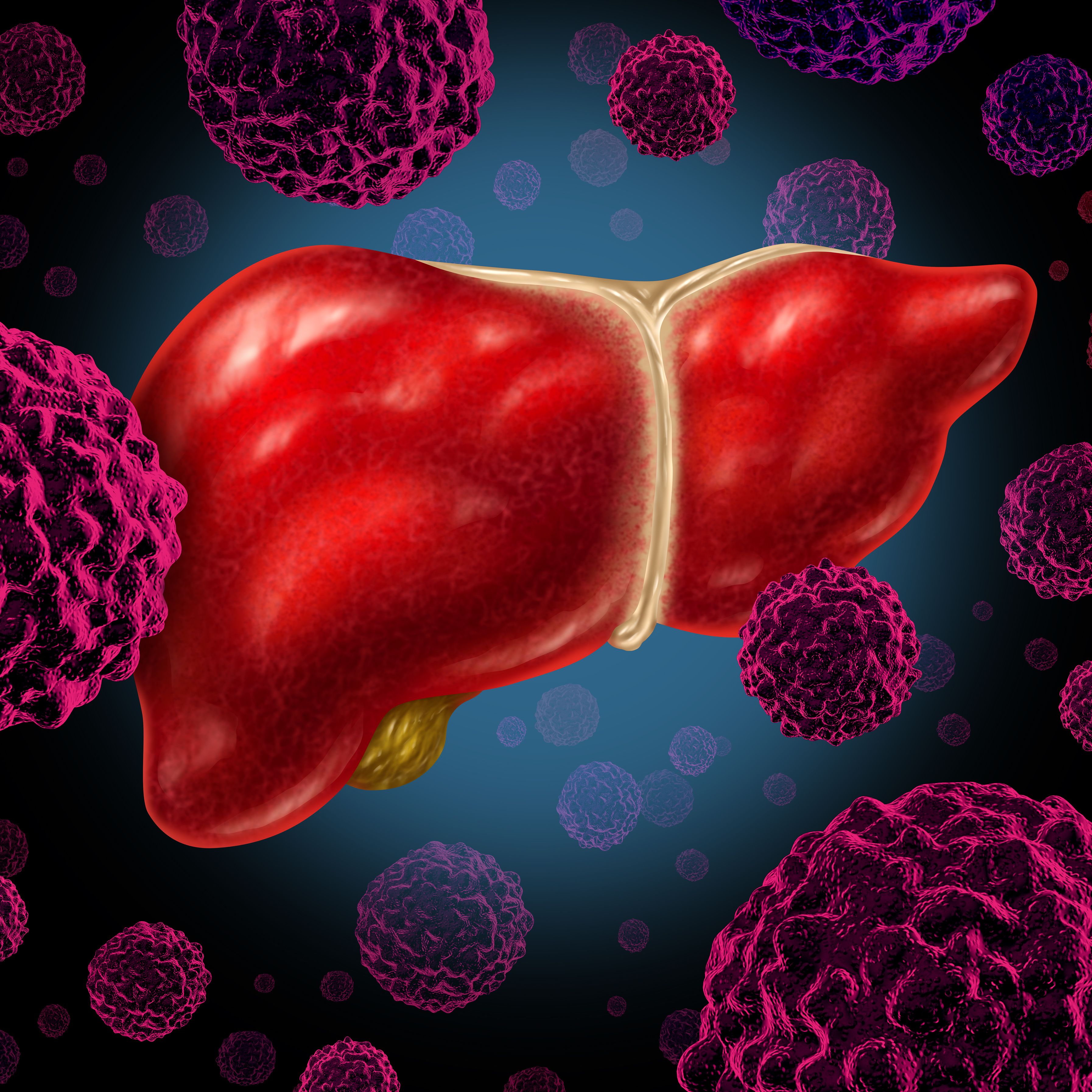
- Regular medical check-ups and liver function tests
- Avoiding alcohol and drugs that can damage the liver
- Eating a healthy, balanced diet
- Getting vaccinated against hepatitis A and B
- Managing stress and maintaining overall health
- Joining support groups or seeking counseling if needed
The Importance of a Healthy Lifestyle
Why is a healthy lifestyle particularly important for people with hepatitis C? A healthy lifestyle can help slow the progression of liver disease and improve overall health outcomes. This includes maintaining a healthy weight, exercising regularly, avoiding alcohol and tobacco, and eating a diet rich in fruits, vegetables, and whole grains. These measures can support liver function and enhance the body’s ability to fight the infection.
Living with hepatitis C also involves emotional and social considerations. Many people may feel stigmatized or anxious about their diagnosis. Support groups and counseling can provide valuable emotional support and practical advice for managing the condition.
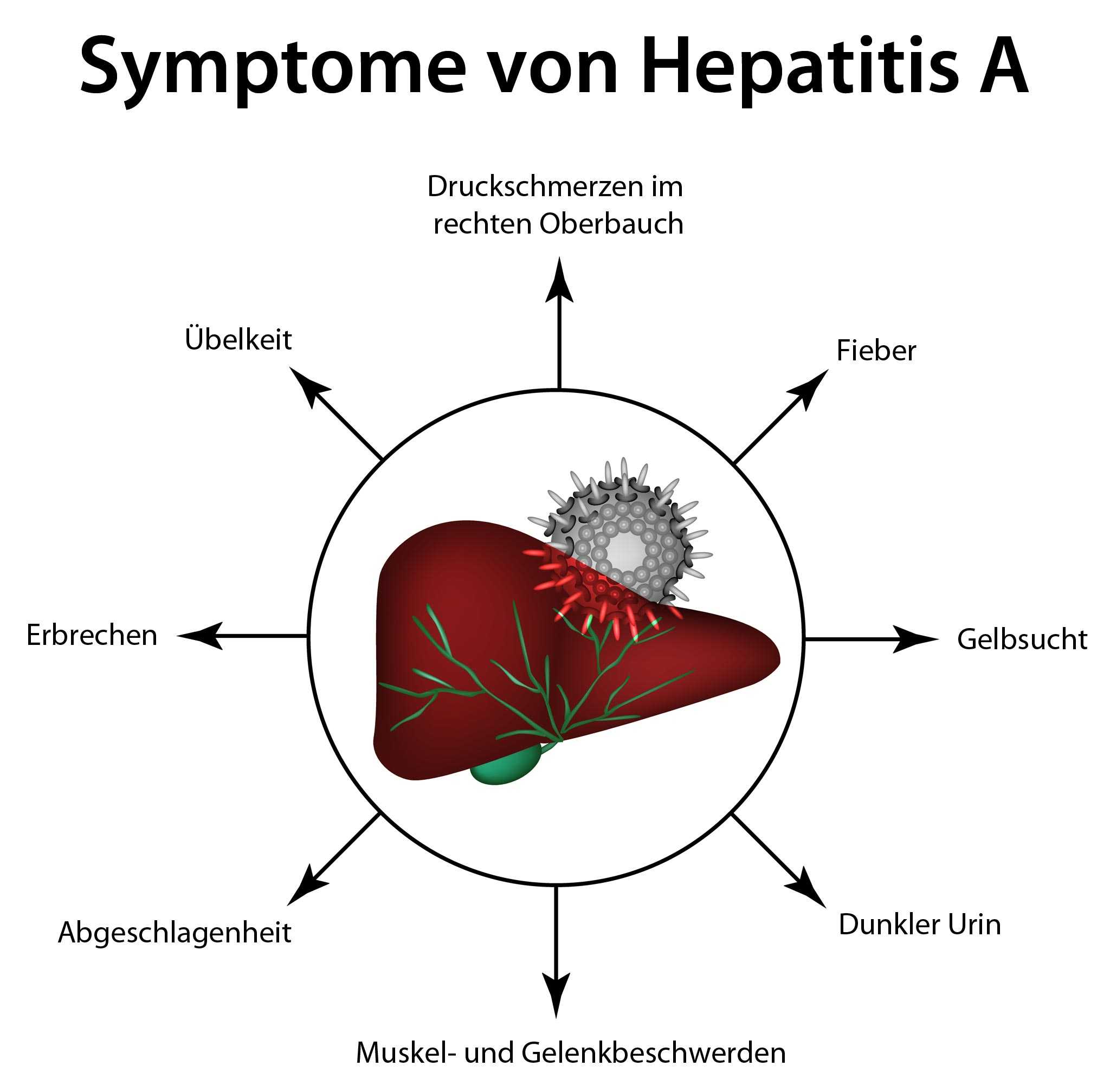
Global Impact: Hepatitis C as a Public Health Challenge
Hepatitis C is a significant global health concern, affecting millions of people worldwide. The World Health Organization (WHO) has set ambitious targets to eliminate viral hepatitis as a public health threat by 2030. This involves:
- Increasing awareness and testing
- Improving access to treatment
- Enhancing prevention measures
- Strengthening surveillance systems
- Addressing socioeconomic factors that contribute to transmission
The Role of Global Health Initiatives
How are global health initiatives addressing the hepatitis C epidemic? Various international organizations, including WHO, UNAIDS, and the World Hepatitis Alliance, are working to combat hepatitis C globally. These efforts include advocating for increased funding, promoting research, improving access to affordable diagnostics and treatments, and supporting national hepatitis elimination plans.
Despite progress, challenges remain, particularly in low- and middle-income countries where access to testing and treatment can be limited. Continued global cooperation and investment in hepatitis C prevention, diagnosis, and treatment are essential for achieving the goal of elimination.

Research and Future Prospects: Advancing Hepatitis C Care
The field of hepatitis C research is dynamic, with ongoing efforts to improve prevention, diagnosis, and treatment. Current areas of research include:
- Developing a preventive vaccine
- Improving diagnostic tools for earlier detection
- Enhancing treatment efficacy for difficult-to-treat cases
- Exploring new strategies to prevent mother-to-child transmission
- Investigating long-term outcomes of cured patients
The Quest for a Hepatitis C Vaccine
Is a hepatitis C vaccine on the horizon? While there is currently no vaccine for hepatitis C, researchers are making progress in this area. Developing a vaccine is challenging due to the virus’s ability to mutate rapidly and its genetic diversity. However, several vaccine candidates are in various stages of development, offering hope for future prevention strategies.
In addition to vaccine research, scientists are exploring new treatment approaches, including therapies that target the host immune system rather than the virus directly. These advancements hold promise for improving outcomes for all individuals affected by hepatitis C.

As research progresses, it’s crucial for healthcare providers and patients to stay informed about the latest developments in hepatitis C care. This knowledge can help guide treatment decisions and improve overall management of the condition.
Hepatitis C | Mass.gov
Hepatitis is any kind of inflammation (a reaction which can include swelling and pain) of the liver. Hepatitis has many causes, including viruses (type of germ), drugs, chemicals and alcohol, and even one’s own immune system attacking the liver. At this time, there are five viruses known to affect the liver in particular. In the United States, the most common types of viral hepatitis are hepatitis A, hepatitis B and hepatitis C. These viruses are very different from one another, but all are infectious and may cause similar symptoms. They differ in how they are spread, how long the infection lasts, and how they are treated. A healthcare provider can test a person’s blood for infection with hepatitis A, B and C virus.
What is hepatitis C?
Hepatitis C is a liver infection caused by the hepatitis C virus. While some people will clear (get rid) of the virus without treatment, most people who get the infection will go on to have chronic (long-term) infection and can pass it on to others (be a carrier). Some of these people will develop liver damage, with possible complications such as cirrhosis (scarring of the liver) and liver cancer, and will feel very sick, while others may remain healthy for many years and have no symptoms. Many people infected decades ago (such as those born between 1945 and 1965) may not know it. There is no vaccine to prevent hepatitis C infection.
Some of these people will develop liver damage, with possible complications such as cirrhosis (scarring of the liver) and liver cancer, and will feel very sick, while others may remain healthy for many years and have no symptoms. Many people infected decades ago (such as those born between 1945 and 1965) may not know it. There is no vaccine to prevent hepatitis C infection.
How is it spread?
The hepatitis C virus is spread by direct contact with blood (or body fluids containing blood) of an infected person. This can happen through:
- Sharing equipment used to inject drugs
- Blood transfusions and organ transplants prior to 1992 when widespread screening of the blood supply began
- Pregnant women infected with the virus passing it to their babies at birth.
- Sharing personal items, such as a toothbrushes, nail clippers, or razors that have blood on it
- Getting tattoos or body piercings in informal settings or with non-sterile equipment
- Poor infection control in health care facilities and residential care facilities
- Sexual transmission is possible, although rare.
 Things that increase sexual transmission of hepatitis C include: having a sexually transmitted disease or HIV infection, sex with multiple partners, or rough sex
Things that increase sexual transmission of hepatitis C include: having a sexually transmitted disease or HIV infection, sex with multiple partners, or rough sex - The hepatitis C virus is NOT spread by casual contact, such as hugging, or through sneezing, coughing, or sharing food and drinks.
What are the symptoms of hepatitis C?
Many adults have few or no symptoms. When symptoms occur, they can include tiredness, loss of appetite, nausea, vomiting, stomach ache, and muscle or joint pain. Urine may become darker in color, and then jaundice (yellowing of the skin and whites of the eyes) may appear. Years later, cirrhosis may occur in some who are infected, when scar tissue replaces healthy liver cells.
How soon do symptoms appear?
When first infected with hepatitis C virus, most people have no symptoms at all, or may have only mild symptoms. For those who do develop symptoms, the symptoms usually appear between six weeks to six months after infection. Many people with chronic hepatitis C infection do not develop symptoms until years, sometimes even decades, later. The longer people live with hepatitis C infection, the more likely they are to develop serious, life-threatening liver disease.
Many people with chronic hepatitis C infection do not develop symptoms until years, sometimes even decades, later. The longer people live with hepatitis C infection, the more likely they are to develop serious, life-threatening liver disease.
How is hepatitis C diagnosed?
Hepatitis C is diagnosed with a blood test to show if the person has been exposed to the virus (called an antibody test) and a blood test to show if the person currently has hepatitis C (sometimes called a viral load test or RNA test).
Who should be tested for hepatitis C?
- All people born between 1945 and 1965
- Anyone who has ever injected drugs, even if once or many years ago
- People with HIV infection
- People who had a blood transfusion organ transplantation before 1992
- People who have been exposed to blood on the job through a needle stick or other injury
- People receiving hemodialysis
- People who have abnormal liver tests or liver disease
How is hepatitis C treated?
Hepatitis C infection can be treated with special drugs that eliminate the virus from the body (cure infection) and prevent liver damage, cirrhosis, and liver cancer. People with hepatitis C should avoid drinking alcohol or taking any medications or dietary supplements that may be harmful to the liver. Hepatitis A and B vaccine may also be recommended. Many of the treatments available today are once-a-day pills taken for a few months; ask your doctor about treatment options and steps you can take to protect your liver from damage.
People with hepatitis C should avoid drinking alcohol or taking any medications or dietary supplements that may be harmful to the liver. Hepatitis A and B vaccine may also be recommended. Many of the treatments available today are once-a-day pills taken for a few months; ask your doctor about treatment options and steps you can take to protect your liver from damage.
How can I prevent hepatitis C?
Since there is no vaccine for hepatitis C, the best way to prevent hepatitis C infection is to avoid contact with the blood of infected people. This includes:
- If you shoot drugs, never share works with anyone. This includes all drug injection equipment that can get blood on or in it (needles, cottons, cookers, ties, water, etc.). Sterile syringes can be purchased over the counter in most pharmacies in Massachusetts by anyone 18 years of age or older. Find out about drug treatment programs that can help you stop using drugs.
- Only get tattoos or body piercings at places using sterile equipment and supplies.

- Never share razors, toothbrushes, or nail clippers
- The risk of sexual transmission is low, but use of latex condoms during vaginal or anal sex will reduce the risk even more
Hepatitis C – Causes, Symptoms, Treatment, Diagnosis
The Facts
Hepatitis is the medical term for inflammation of the liver. The hepatitis C virus is one of the many causes of inflammation of the liver. Liver inflammation can also be caused by other types of hepatitis viruses, as well as by alcohol, medications, and some other less common problems.
Hepatitis C is a common cause of liver inflammation, liver disease, and liver cancer in North America. About 245,000 Canadians have hepatitis C, but many are not aware that they carry the virus. This is because many people who are infected with the hepatitis C virus do not have symptoms.
Hepatitis C is transmitted from one person to another through blood or blood products that are infected with the virus. Modern screening tests have almost eliminated the transmission of hepatitis C through blood products (e.g., transfusions). Today the main way hepatitis C is spread in Canada is through contaminated drug needles.
Modern screening tests have almost eliminated the transmission of hepatitis C through blood products (e.g., transfusions). Today the main way hepatitis C is spread in Canada is through contaminated drug needles.
Sponsored Health Tool
Causes
The hepatitis C virus (HCV) spreads through blood and can be transmitted in the following ways:
- Sharing needles while using illegal street drugs. In Canada, this is the main way hepatitis is spread.
- Using non-sterile instruments and needles for tattooing and body piercing.
- Receiving organs (such as a kidney, liver, or pancreas) from a donor who is infected with HCV. However, organ donors in Canada and the US are screened for HCV infection, so the risk of being infected with the virus after an organ transplant is low.
- Blood transfusion, which used to be a major way that HCV was spread.
 But today, screening tests are performed on all donated blood so this cause has almost been eliminated.
But today, screening tests are performed on all donated blood so this cause has almost been eliminated. - Sharing personal care items such as razors, scissors, nail clippers, or a toothbrush with an infected person.
- Engaging in high-risk sexual behaviour (e.g., having multiple partners or not using condoms when having sex with an infected person).
Although the risk is low, having a sexually transmitted infection or being infected with the human immunodeficiency virus (HIV) may increase the risk of sexual transmission of HCV infection. The risk of an infected pregnant woman transmitting the virus to her baby is also low. It is possible for a breastfeeding mother to pass the infection to her baby while breast-feeding if her nipples are cracked and bleeding. People in prisons and health care workers exposed to infected blood are at higher risk of contracting the virus.
Doctors don’t know the length of time a person infected with the virus remains contagious. For this reason, anyone who tests positive for the HCV antibody should take precautions to avoid spreading the infection. See “Treatment and Prevention” for more information.
For this reason, anyone who tests positive for the HCV antibody should take precautions to avoid spreading the infection. See “Treatment and Prevention” for more information.
Sponsored Health Tool
Symptoms and Complications
When HCV first infects the body, it is referred to as the acute phase. In the acute phase, some people experience symptoms such as tiredness and jaundice (yellowing of the skin and eyes). Other symptoms such as headache, fever, muscle aches, and abdominal pain may also occur. Symptoms appear within 2 to 12 weeks of infection, and last anywhere from 2 weeks to 3 months. However, many people experience no symptoms during this acute phase of infection.
While some people are able to clear the virus from their body after the acute phase, about 80% of people infected with hepatitis C will develop a chronic infection. Since it progresses slowly, symptoms of chronic hepatitis can take up to 20 or 30 years to appear. Symptoms of chronic hepatitis C can include fatigue, jaundice, abdominal pain, bruising or bleeding more easily, poor appetite, itching, and joint pain.
Since it progresses slowly, symptoms of chronic hepatitis can take up to 20 or 30 years to appear. Symptoms of chronic hepatitis C can include fatigue, jaundice, abdominal pain, bruising or bleeding more easily, poor appetite, itching, and joint pain.
Long-term complications of HCV infection include liver cirrhosis (permanent liver scarring, which makes it difficult for your liver to function), liver failure, and liver cancer. Although it may take many years to develop, 10% to 20% of people who have hepatitis C will develop liver cirrhosis, and of these people, 1% to 5% will develop liver cancer.
Making the Diagnosis
Doctors use blood tests to determine whether or not someone has hepatitis C. This includes tests to detect the presence of the hepatitis C virus or the antibodies produced by the body to fight the virus, as well as tests for liver inflammation or damage.
The anti-HCV test detects the presence of antibodies to the hepatitis C virus. Antibodies are produced by the immune system as a result of a foreign substance (such as a virus) in the body. This test determines if someone has been exposed to the hepatitis C virus, but does not measure the amount of virus in the body. Another test called the HCV RNA test detects the actual virus in the blood and can measure the amount of virus in the body.
Antibodies are produced by the immune system as a result of a foreign substance (such as a virus) in the body. This test determines if someone has been exposed to the hepatitis C virus, but does not measure the amount of virus in the body. Another test called the HCV RNA test detects the actual virus in the blood and can measure the amount of virus in the body.
Blood tests are used to check for liver inflammation and damage. These tests check for enzymes normally found in liver cells. When liver cells are inflamed or damaged, more enzymes than normal will be released into the blood. Examples of enzymes found in liver cells include alanine aminotransferase (ALT) and aspartate aminotransferase (AST).
In some cases, a liver biopsy may be performed to determine the extent of liver damage caused by hepatitis C.
Treatment and Prevention
Treatment
Not all people infected with HCV require or respond to treatment. Treatment is usually considered for people who have had elevated liver function tests for at least 3 months and also have liver inflammation or cirrhosis confirmed by a biopsy.
Treatment is usually considered for people who have had elevated liver function tests for at least 3 months and also have liver inflammation or cirrhosis confirmed by a biopsy.
People who have little or no liver damage as confirmed by a liver biopsy may not develop severe liver damage. They may choose not to have treatment right away, and instead opt to have doctors monitor their condition with regular blood tests and a liver biopsy every three to five years.
Many factors need consideration when deciding on treatment. Your doctor will help you decide which and if treatment is right for you.
Since the introduction of new antiviral medications in 2013, the treatment of HCV infection has evolved. The cure rates of hepatitis C have increased significantly. Antiviral therapy may also help slow the progression of liver damage or reduce the risk of cirrhosis and liver cancer.
People with HCV need to get blood tests to guide medication therapy before starting treatment. Which therapy is used depends on the genetic type of HCV that is causing the infection. These types are referred to as genotypes. The most common genotypes are 1, 2, and 3. Depending on the type of HCV a person has, and the extent of liver damage, the length of treatment can vary.
Which therapy is used depends on the genetic type of HCV that is causing the infection. These types are referred to as genotypes. The most common genotypes are 1, 2, and 3. Depending on the type of HCV a person has, and the extent of liver damage, the length of treatment can vary.
Hepatitis C medications are being researched rapidly, advancing antiviral medications and treatment strategies. Most antiviral treatments last from 8 to 12 weeks, although some may last longer. Depending on the medications used, the side effects of antiviral medications may include flu-like symptoms, anemia, fever, fatigue, headaches, weight loss, nausea, skin rashes, and muscle or bone pain.
If the liver is severely damaged due to hepatitis C, a liver transplant may be required, but in most cases this will not cure the virus.
If you have been diagnosed with chronic hepatitis C, you can help prevent additional liver damage by not drinking alcohol or smoking cigarettes or cigars. Some commonly used prescription and non-prescription medications as well as herbal products can also affect the liver and cause more damage. Talk to your doctor or health care professional about the safety of taking certain medications.
Some commonly used prescription and non-prescription medications as well as herbal products can also affect the liver and cause more damage. Talk to your doctor or health care professional about the safety of taking certain medications.
Prevention
At present, no vaccine exists to prevent infection with HCV. Therefore, it is important to avoid exposure to the virus. Use the following precautions to reduce your risk of infection:
- Do not share a toothbrush, razor, or anything else that might have blood on it with someone who has hepatitis C.
- Use latex condoms during sexual intercourse and reduce your number of sexual partners if you have more than one.
- If you work in a hospital or other health care facility, wear protective gloves and clothing when disposing of needles and other contaminated sharp objects.
- If you want to get a tattoo or have your body pierced, make sure the practitioner sterilizes the instruments and supplies.

- Avoid using illegal street drugs (including intranasal or “snorted” cocaine) or find a drug rehabilitation program. If you do inject drugs, do not share needles or other equipment (such as cotton, spoons, and water) with other users.
Call your doctor if you have symptoms of hepatitis, or if you think you may have been exposed to someone who has it.
All material copyright MediResource Inc. 1996 – 2021. Terms and conditions of use. The contents herein are for informational purposes only. Always seek the advice of your physician or other qualified health provider with any questions you may have regarding a medical condition. Source: www.medbroadcast.com/condition/getcondition/Hepatitis-C
Hepatitis B & C | HIV.gov
HIV and Hepatitis B and Hepatitis C Coinfection
Hepatitis B and hepatitis C are liver infections caused by a virus. Because these infections can be spread in the same ways as HIV, people with HIV in the United States are often also affected by chronic viral hepatitis.
Viral hepatitis progresses faster and causes more liver-related health problems among people with HIV than among those who do not have HIV. Liver disease, much of which is related to HBV or HCV, is a major cause of non-AIDS-related deaths among people with HIV.
Given the risks of hepatitis B or hepatitis C coinfection to the health of people living with HIV, it is important to understand these risks, take steps to prevent infection, know your status, and, if necessary, get medical care from someone who is experienced in treating people who are coinfected with HIV and HBV, or HIV and HCV.
How Are Hepatitis B and Hepatitis C Spread from Person to Person?
Like HIV, the hepatitis B and hepatitis C viruses spread:
- By sharing needles, syringes, and other injection equipment.
- From mother to child: Pregnant women can pass these infections to their infants. HIV-HCV coinfection increases the risk of passing on hepatitis C to the baby.
- Sexually: Both viruses can also be transmitted sexually, but HBV is much more likely than HCV to be transmitted sexually.
 Sexual transmission of HCV is most likely to happen among gay and bisexual men who are living with HIV.
Sexual transmission of HCV is most likely to happen among gay and bisexual men who are living with HIV.
Is Hepatitis Testing Recommended for People with HIV?
Yes. Everyone living with HIV should be tested for HBV and HCV when they are first diagnosed with HIV and begin treatment. People living with HIV who have ongoing risk factors for getting hepatitis B or hepatitis C should be tested annually.
In addition, new HCV screening recommendations from the Centers for Disease Control and Prevention (CDC) call for:
- One-time screening for all adults 18 years and older
- Screening of all pregnant women during every pregnancy
- Testing for all persons with risk factors, with testing continued periodic testing those with ongoing risk.
How Can You Prevent Hepatitis B and Hepatitis C?
Hepatitis B: Vaccination is the best way to prevent all of the ways that hepatitis B is transmitted. People with HIV who do not have active HBV infection should be vaccinated against it. In addition to the 3-dose series of hepatitis B vaccine given over 6 months, as of 2017, there is a 2-dose series given over 1 month.
In addition to the 3-dose series of hepatitis B vaccine given over 6 months, as of 2017, there is a 2-dose series given over 1 month.
Hepatitis C: No vaccine exists for HCV and no effective pre- or postexposure prophylaxis is available. The best way to prevent hepatitis C infection is to never inject drugs or to stop injecting drugs by getting into and staying in drug treatment. If you continue injecting drugs, always use new, sterile needles or syringes, and never reuse or share needles or syringes, water, or other drug preparation equipment.
Treatment for HIV-Hepatitis Coinfections
HIV-HBV and HIV-HCV coinfections can be effectively treated in most people. But medical treatment can be complex, and people with coinfection should look for health care providers with expertise in the management of both HIV infection and viral hepatitis.
Hepatitis B: For hepatitis B, treatment can delay or limit liver damage by suppressing the virus. Like treatment for HIV, hepatitis B treatment may need to be taken for the rest of your life.
Hepatitis C: Hepatitis C is a curable disease. Left untreated, it can cause several liver damage, liver cancer, or death. However, new treatments for hepatitis C have been approved in recent years. These direct-acting antiviral treatments are much better than the previously available treatment because they have few side effects and do not need to be injected. These treatments for HCV infection cure about 97% of people, including those living with HIV, with just 8-12 weeks of oral therapy (pills).
Hepatitis C | Health and Seniors Care
Hepatitis C (HCV)
Hepatitis C is a chronic liver disease caused by the hepatitis C virus (HCV). The virus is most commonly spread through drug use and the sharing of drug-using paraphernalia. There remains a large population of individuals estimated to have HCV who are unaware of it. They remain undiagnosed. Testing is the only way to find out if you have an HCV infection. If left untreated, the infection can cause damage to your liver.
If left untreated, the infection can cause damage to your liver.
Symptoms
Many people infected with HCV will not show any symptoms. Others may not show symptoms for decades. All the while, they can spread the infection to others. They may not know they are infected until they get liver damage.
Causes
HCV is spread through contact with infected blood. The virus is commonly spread through injection drug use, tattooing, workplace exposure and exposure outside of Canada.
Workplace exposure occurs by getting pricked by work equipment that has infected blood on it. Exposure outside of Canada occurs as when vacationing to areas where HCV infection is prevalent.
Individuals who were exposed to contaminated blood or blood products or those who underwent organ transplantation prior to 1992 may be at risk.
Although the risk is very low (less than five percent), it is possible to spread the virus through other body fluids. These include saliva, semen, vaginal secretions or breast milk. This makes it possible to spread the virus through sexual contact or when an infant drinks milk from the mother’s breast. But the risk of catching the virus in these ways remains low.
This makes it possible to spread the virus through sexual contact or when an infant drinks milk from the mother’s breast. But the risk of catching the virus in these ways remains low.
Treatment
In one out of four people infected with HCV, the virus goes away on its own during the first six months after infection. Three out of four go on to developing chronic HCV infection.
There are medications available to treat HCV. These can prevent serious liver damage. As symptoms may not show up for decades, it is important to find out if you have the virus. This is so treatment can start immediately. Testing is the only way to find out if you have HCV.
An estimated 242,500 individuals are infected with HCV in Canada. 21 percent of those don’t know they are infected and remain undiagnosed.
HCV infection progresses slowly. For many people, treatment is available. So if you think you may be at risk of infection, consult your health care provider right away.
Prevention
Taking proper precautions may help reduce your risk of HCV infection.
- Do not share needles or other drug-using paraphernalia.
- If you are likely to be in contact with someone else’s blood, wear latex gloves.
- When getting a tattoo or body piercing, never allow use of homemade equipment or re-using equipment.
- Practice safe sex (for example, use condoms).
Manitoba Health and Seniors Care Resources
For the Public
For Health Care Providers
Forms
Other Resources
Communicable Disease
Health Links – Info Santé
Ask Health |
11 Facts About Your Treatment
HCV and Harvoni: Interferon-Free
Many treatments for chronic hepatitis C virus (HCV) — the blood-borne infectious disease that can lead to:
- chronic liver disease
- liver inflammation and scarring
- liver cancer
- eventual liver transplant
have been the focus of ongoing research.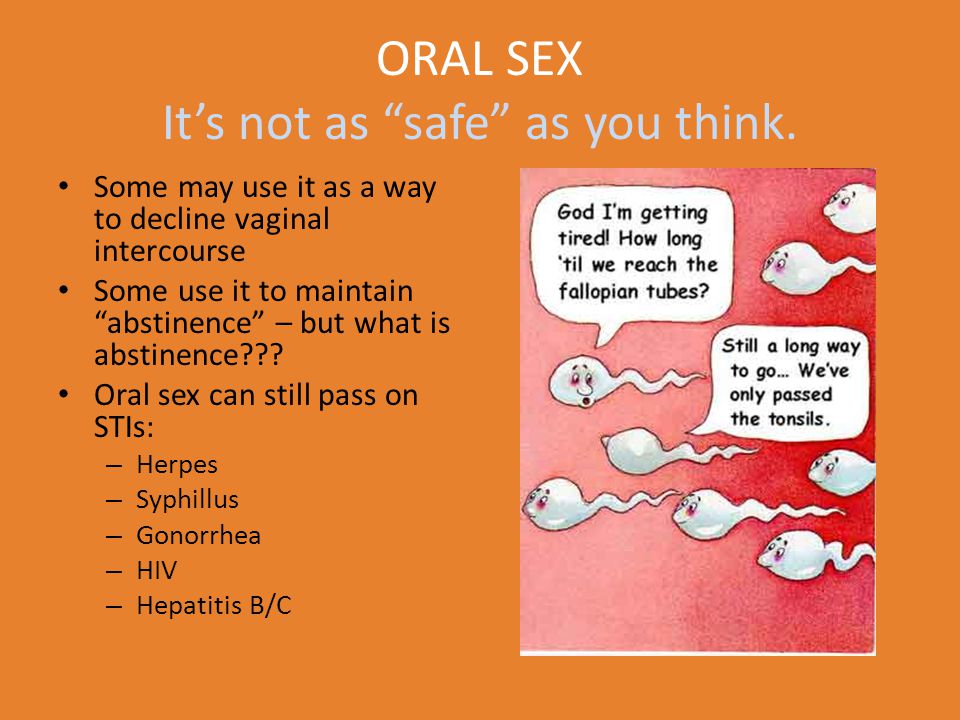
In the past, treatment options for HCV were burdened by lack of an all-oral regimen, unpleasant side effects with interferon, and treatment courses often exceeding one year. Today, oral treatment regimens aim to be more tolerable, interferon-free, and with shorter treatment times — some as short as 8 to 12 weeks. But how are these drugs used?
Here’s a quick rundown of groundbreaking Harvoni (ledipasvir and sofosbuvir), the first approved all-oral, ribavirin and interferon-free HCV treatment.
What Exactly is Harvoni?
Chronic hepatitis C virus (HCV) treatment has come a long way — very quickly. In fact, in 2012 the typical treatment for HCV involved a combination of an injectable antiviral interferon and ribavirin. These regimens led to a cure in only about half of patients, took at least 6 months to complete, and often failed due to intolerable side effects.
Harvoni is Gilead’s NS5A inhibitor (ledipasvir) and nucleotide polymerase (NS5B) inhibitor (sofosbuvir). Harvoni prevents hepatitis C virus (HCV) from multiplying in the body. It is a single combination pill that is given by mouth once a day for 8, 12, or 24 weeks, depending upon your HCV status.
Harvoni prevents hepatitis C virus (HCV) from multiplying in the body. It is a single combination pill that is given by mouth once a day for 8, 12, or 24 weeks, depending upon your HCV status.
Harvoni comes as:
- oral tablets that contain ledipsavir and sofosbuvir: 45/200 mg or 90/400 mg strengths
- oral pellets that contain ledipsavir and sofosbuvir: 45/200 mg or 33.75 mg/150 mg. Harvoni oral pellets can be taken right in the mouth without chewing, or with food. Harvoni pellets are used in pediatric patients who cannot swallow the tablet formulation.
Harvoni is indicated for the treatment of adults and children 3 years of age and older with chronic hepatitis C virus (HCV).
- genotype 1, 4, 5, or 6 infection without cirrhosis or with compensated cirrhosis
- genotype 1 infection with decompensated cirrhosis, for use in combination with ribavirin
- genotype 1 or 4 infection who are liver transplant recipients without cirrhosis or with compensated cirrhosis, for use in combination with ribavirin
Review the complete Harvoni dosing here.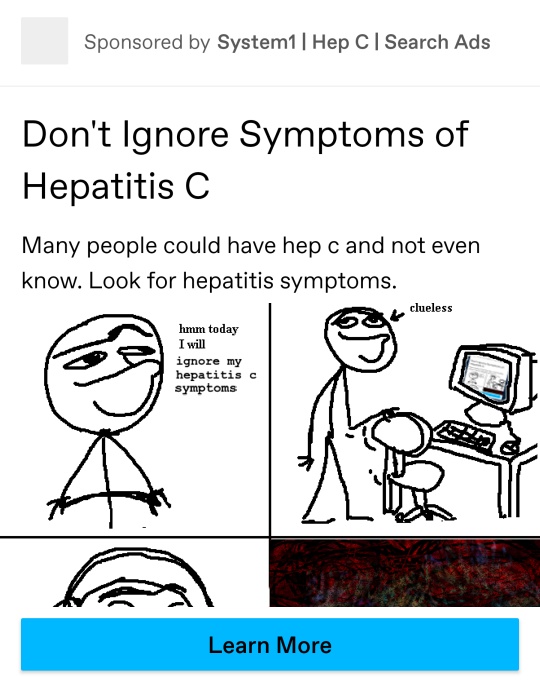
Get to Know Your Genotype
Before you can be treated for HCV, you’ll need to know your genotype. A genotype is a particular gene set carried by an individual.
There are six different genotype classifications for HCV, and at least 50 subtypes, based on the genetic material in the RNA. Generally, patients are only infected with one genotype, but genotypes can mutate quickly and become drug resistant. Superinfection — infection with more than one genotype — is possible (but rare).
Effectiveness of drugs vary based on which HCV strain a patient is infected with – for example:
- Harvoni, (ledipasvir and sofosbuvir) can be used for genotype 1, occurring in roughly 70% of infected patients, as well as types 4, 5 and 6.
- Epclusa (sofosbuvir and velpatasvir) is a “pan-genotypic” once-daily HCV drug that was approved in June 2106 and is indicated for all HCV subtypes 1-6.
More about Epclusa
Epclusa is a nucleotide analog polymerase inhibitor and pan-genotypic NS5A inhibitor fixed-dose combination that treats all major HCV genotypes 1 through 6 without cirrhosis or with compensated cirrhosis OR with decompensated cirrhosis for use in combination with ribavirin. It is approved for adults and children 3 years of age and older. Dosing in children is weight based. It is also used in patients with HCV/HIV-1 coinfection.
It is approved for adults and children 3 years of age and older. Dosing in children is weight based. It is also used in patients with HCV/HIV-1 coinfection.
Epclusa (sofosbuvir / velpatasvir) is available as an oral tablet (400 mg/100 mg or 200 mg/50 mg) given once daily for 12 weeks (with or without ribavirin based on liver function), or as an oral pellet formulation (200 mg/50 mg or 150 mg/37.5 mg per packet) for children who cannot swallow tablets. In children 3 to 6 years of age, given the oral pellets with food to inprove palatability. Epclusa oral tablets are not used in patients weighing less than 17 kg.
Prior to HCV Treatment
In addition to determination of HCV genotype, previous treatment failures (if any), presence of cirrhosis (liver disease) or kidney disease, possible drugs interactions and side effects, cost and insurance coverage need to be discussed with your doctor.
You’ll also need to be tested for evidence of hepatitis B virus (HBV) infection before initiating HCV treatment with Harvoni.
Cost
- Many HCV treatments are costly and you should investigate how they will be paid for before treatment.
- The Harvoni manufacturer Gilead may be able to offer copay coupons or other assistance to patients who cannot afford their medication.
- In addition, many HCV treatments are covered by insurance or Medicare. Check your coverage.
- Harvoni is now available as an authorized generic option for the higher strength tablet, but can still run over $10,000 per month for the cash price. Prices may vary and you can print discount coupons here. The brand name price is over $32,000 per month.
Selection of HCV treatment can be a complicated decision that often requires the expertise of a clinical specialist. Be sure to discuss your treatment plan with your primary care physician to determine if specialist care is needed. Tell your doctor if you have a history of liver disease, kidney problems, HIV, or if you’re pregnant, breastfeeding or planning a pregnancy.
Harvoni: A First-Line Treatment Option
Harvoni is one recommended first-line option for HCV in guidelines and clinical decision support resources. Harvoni treatment results in hepatitis C cures in roughly 95% to 99% of patients (95 to 99 out of every 100 patients).
Your treatment regimen and length will vary according to your liver condition and whether or not you have received prior treatments.
- Most patients who have never had treatment, and without liver disease, will only have to take Harvoni for 12 weeks.
- Some genotype 1 patients with low amounts of virus in their blood, and no cirrhosis, may only need to take Harvoni for 8 weeks.
- Patients who have received other HCV drug treatments in the past without success may need to extend the Harvoni regimen to 24 weeks.
- People at risk for more severe liver disease may need to combine Harvoni with ribavirin, another antiviral medication, but only for 12 weeks. If Harvoni is given with ribavirin, also be sure to follow the ribavirin prescribing and dosing information.
- Children 3 years of age and older will also take Harvoni (dose is based on their weight) for 12- or 24-weeks based on previous treatment experience and presence of liver disease. Harvoni oral pellets can be used by smaller children who cannot swallow the tablet formulation.
Learn more: How should I give Harvoni pellets to my child?
Harvoni Dosing and Side Effects
Harvoni is given by mouth once daily with or without food. It’s best to get in a routine and take it the same time every day. Don’t change your dose or stop taking your medicine unless directed to do so by your doctor. Tablets or oral pellets are available. Do not chew Harvoni pellets.
The recommended dosage of Harvoni in children 3 years of age and older is based on their weight.
Usually, the side effects that occur with Harvoni are mild, but can vary based on your treatment regimen. In clinical studies, only 1% (1 out of 100) or less of patients stopped treatment due to side effects. The most common side effects occurring in greater 10% of patients include:
- headache
- fatigue
- asthenia (lack of energy)
In addition, all patients should be tested for evidence of current or prior hepatitis B virus (HBV) infection before starting treatment with Harvoni. As noted in a Harvoni boxed warning, HBV reactivation has been reported, in some cases resulting in fulminant hepatitis (severe and rapid liver disease), liver failure, and death.
Co-Infection with HIV
Up to one-third of patients with HCV also have HIV in the U.S. Co-infection can increase the risk for advanced liver disease (cirrhosis), end-stage liver disease, and liver cancer.
Harvoni is also approved to be used in patients co-infected with HIV. The dosing regimens in HIV/HCV co-infected patients are the same as for patients without HIV, and HCV cure rates (SVR12) are in the range of 96%.
However, there are important drug interactions with Harvoni, including with various HIV treatments, such as any medicine containing tenofovir.
Patients should discuss these interactions with their doctor and pharmacist and have a drug interaction review performed each time they start (or even stop) a medication. Patients should tell their doctor and pharmacist about all the medicines they take, including:
- prescription
- over-the-counter
- vitamins
- herbal supplements.
Drug Interaction Concerns with Harvoni
Harvoni has many possible drug interactions.
- Healthcare providers assess the potential for Harvoni drug interactions prior to prescribing.
- Patients should tell their doctor and pharmacist about all of the medications they take, including over-the-counter (OTC) medicines, herbal products, vitamins or any dietary supplements.
- Patients should remember to get a drug interaction review with each new or discontinued drug while taking Harvoni.
A slowed heart rate (bradycardia) can occur in patients who take Harvoni in combination with amiodarone (Pacerone), a drug used to control the heart’s rhythm.
- Bradycardia may be more serious in patients also taking beta blockers with amiodarone and Harvoni, or those with underlying heart disease and/or advanced liver disease.
- Use of Harvoni with amiodarone is not recommended. If you have no other options for treatment, your doctor will monitor your heart function closely.
Other drug interactions (this is not a complete list)
- Harvoni should not be used with other drugs that also contain sofosbuvir (Epclusa, Sovaldi, Vosevi)
- Medicines such as St. John’s Wort (an herbal drug bought over-the-counter and used for depression) and rifampin (both are P-gp inducers) may alter drug levels of Harvoni, so using P-gp inducers with Harvoni is not recommended.
- If you take the blood thinner warfarin, frequent monitoring of your international normalized ratio (INR) values is recommended.
- Lab parameters may also need to be followed for glucose (blood sugar) control in certain patients as well as in patients that take drugs where small differences in blood concentrations can lead to toxicty or a lower therapeutic effect (these drugs have a narrow therapeutic index).
HCV: Show Me the Money
There’s no question that Harvoni is a blockbuster drug. In fact, all of the new HCV oral agents are very expensive, and usually out of reach for patients without adequate insurance. If you are not able to afford your medications, be sure to contact the manufacturer and ask about any available Patient Assistance Programs.
It may be worthwhile to check with your health insurance before you and your doctor decide upon Harvoni as your treatment of choice to be sure it is a preferred regimen. Most insurance plans and Medicare are now inlcuding oral direct-acting HCV agents on their formulary (which is a list of medications they do or do not pay for).
Millions of people worldwide are still untreated or undiagnosed for HCV, with a need to be cured. These drugs are important to bring a cure to HCV, but they must be financially accessible, as well.
Cost Versus Benefit
The hepatitis C franchise has been a strong money-maker for pharma, particularly with the advent of the all-oral, direct-acting antivirals that boast cure rates of up to 99%.
But the treatment price tag for Harvoni is a hard pill to swallow. Many consider the costs of these new oral HCV drugs unsustainable for patients, payers or the healthcare system as a whole. However, most insurance companies include at least one direct-acting HCV antiviral on their formulary. Plus, authorized generics are now available for some oral agents, helping to lower costs for insurance and patients
It’s important to consider the costs of HCV to society — by 2024 this figure may top $9 billion. Some experts state that these drugs are game changers, and most patients would agree. But still, there are roadblocks:
- Oral, direct-acting antivirals for HCV will save millions in healthcare costs related to liver cancer, liver transplants and overall HCV care, and that their benefit is well worth the cost.
- Some patients aren’t able to access these drugs because insurance guidelines often prohibit their use until a later stage of HCV disease, or their deductibles or co-insurance are too high.
- Manufacturers may be able to give financial support, so check other avenues for patient assistance.
What Are Your Thoughts?
You are the consumer, the patient, and the center of the healthcare system.
- So what are your thoughts about the new HCV oral treatments?
- Have you used them and what are your experiences?
- Consider joining the Drugs.com Hepatitis C Virus Support Group to voice your opinion and lend facts to the discussion.
You can also ask questions, browse answers, and stay up-to-date with the latest news and FDA drug approvals, including the latest HCV antivirals.
Finished: Hep C and Harvoni: 11 Facts About Your Treatment
Austin Health: Get the facts
Hepatitis C can be cured. Treatment is simple and effective with a cure rate of 95%.
What is Hepatitis C?
Hepatitis (or ‘Hep’) C is a blood-borne infection that damages the liver and causes liver cancer.
Because Hep C often doesn’t have any symptoms, many people with Hep C don’t know they have it.
Most people with Hep C have not been treated.
Hepatitis C can be cured. Treatment is simple and effective with a cure rate of 95%. Treatment today consists of 1-3 tablets a day, for 8 to 12 weeks, with little to no side effects.
The World Health Organisation and the Australian Government have set a target for viral hepatitis to be eliminated by 2030. That’s why it’s even more important to spread the word about Hep C and make sure that everyone that is at risk of infection gets a blood test.
Should I get tested for Hep C?
Everyone should be tested for hepatitis C, even those without symptoms or known liver disease. Testing for Hepatitis C is especially important if you:
- were born from 1945 to 1965 (age group with highest rate)
- have abnormal liver function test results with no identified cause
- are a healthcare worker who has had a blood or needle stick injury
- were exposed to reusable, unsterilised equipment during medical/ceremonial/tattoo procedures
- have injected or inhaled illicit drugs
- have been in prison
- are a haemophiliac treated with clotting factors before 1987
- have undergone long-term haemodialysis
- received blood transfusions or organ transplants before 1992
- are living with HIV
- were born to a mother with hepatitis C.
People with an ongoing risk of exposure should have a yearly Hepatitis C PCR RNA test.
How is Hep C diagnosed?
Testing for hepatitis C involves two types of blood tests:
- Hepatitis C antibody test – this indicates previous contact with the virus.
- Hepatitis C PCR RNA – this indicates current infection and how much virus is in the blood.
Tests for hepatitis C are not part of regular blood tests. See your GP to arrange testing.
If you have Hepatitis C and are seeking treatment, you can contact us directly for an appointment.
Phone or text our Liver Nurse on: 0481 909 741
90,000 7 little-known facts about hepatitis
Why it is impossible to protect yourself from hepatitis completely, why are nail salons dangerous, is hepatitis associated with liver cancer and why new effective drugs are bad
There are more than eight types of hepatitis
Hepatitis is not always an infectious disease. A person can get hepatitis without getting infected from anyone. The fact is that, in addition to viral, there is autoimmune and toxic hepatitis.In the first case, the liver is attacked by the human immune system (the reasons for this aggression are unknown). In toxic hepatitis, the liver is affected by certain medications (overdose of paracetamol, amoxicillin, and potassium clavulanate), industrial chemicals, and alcohol. The liver of 20 percent of alcoholics sooner or later comes under attack. As a result of these influences, inflammation of the liver occurs.
But still the most common viral hepatitis. There are at least six different viruses that cause hepatitis (A, B, C, D, E, G).They are very different in nature, and the diseases that arise as a result of infection with each of them are also different. The most dangerous are hepatitis B and C, which lead to the development of severe forms of chronic hepatitis. The hepatitis D virus also leads to this, but it is dangerous only if the person is already infected with the hepatitis B virus. Viruses A and E are less dangerous because they only cause acute hepatitis. The hepatitis G virus was discovered relatively recently, and there is still debate in the scientific community as to whether it is the cause of hepatitis.
It is not only drug addicts who are infected with hepatitis B and C
Hepatitis B affects 2 billion people worldwide, of whom 400 million suffer from chronic hepatitis. The problem is that many infected people do not know about their own status, and therefore spread the virus further. The World Health Organization estimates that about 3 percent of the world’s population is infected with hepatitis C. Up to 85 percent of acute infections result in chronic hepatitis.
It is not only drug addicts who are infected with hepatitis B and C. Blood transfusions, salon nails, and dental visits are also ways to get the virus. For hepatitis B, unprotected sex can be added to this list. It also leads to infection with hepatitis A. This virus is also transmitted by drinking contaminated water or eating something prepared by a sick person who has not washed their hands.
Despite the prevalence of the disease, hepatitis is a less discussed topic than HIV or malaria, and people who contract the virus are stigmatized.
Different types of hepatitis virus are common in different countries
Viral hepatitis is not uniformly spread throughout the world. It is most commonly found in Asia and Africa: in China, Vietnam, Cambodia and Afghanistan, 10–12 percent of people have hepatitis B. In Guinea and Liberia, this figure rises to 16 percent. In Eastern Europe (including Russia), 1–2 percent of the population is sick, while in Western Europe and North America, less than 1 percent of the population is infected with hepatitis B.Therefore, before traveling to Russia, unvaccinated Europeans and Americans are recommended to be vaccinated against hepatitis B and A).
Hepatitis C is most common in Central and East Asia and North Africa, primarily among drug addicts. But in Egypt, the story is completely different: there was a campaign in the 1960s to combat schistosomiasis, a parasitic disease that at that time affected 40 percent of Egyptian villagers. The World Health Organization estimates that about 250,000 people have received approximately 2 million doses of the drug intravenously.Unfortunately, all this happened before the advent of disposable syringes in widespread practice. It was the lack of precautions during the handling of glass syringes in a massive campaign to treat and prevent schistosomiasis that caused the hepatitis C epidemic in Egypt.
Hepatitis B and C are more likely to develop liver cancer
Viral hepatitis is dangerous not only in itself, but also because it can lead to liver cancer.Up to 80 percent of episodes of primary liver cancer worldwide occur in chronic carriers of viral hepatitis B or C. However, exactly how the virus causes cancer (and whether it does) is not entirely clear. There are several main theories. First, chronic infection of a patient with hepatitis B or C viruses leads to permanent inflammation of the liver, which leads to cirrhosis and potentially cancer. In addition, the immune system of an infected person for years attacks the liver cells in which the virus multiplies, which aggravates the situation.Secondly, both viruses (B and C) interfere with molecular processes in liver cells. It is not known for certain to what extent these changes contribute to the development of cancer, but recent studies show that when the hepatitis B virus multiplies in the cell, changes occur in the genes that control its division. This, in turn, can lead to uncontrolled cell division and cancer growth.
In some cases vaccination can protect against hepatitis
Since hepatitis is caused by different viruses, there is no single vaccine that protects against all types of viral hepatitis.But now you can get vaccinated against hepatitis A and B. In fact, the hepatitis B vaccine, created in 1981, was the first ever vaccine against cancer: by preventing hepatitis B, you can significantly reduce the risk of liver cancer. In Russia, the first vaccination against hepatitis B is given to newborns. Despite the fact that the vaccine has been created, scientists continue to improve it. For example, back in 2005, researchers believed it was possible to create an oral hepatitis B vaccine in the form of a genetically modified potato.However, these works did not give any practical results.
There is no vaccine for hepatitis C yet. There are several reasons for this. First, the hepatitis C virus is not homogeneous: the viruses that infect two different people can differ by 30–35 percent. This diversity complicates the development of a vaccine, because in essence, you need to come up with a vaccine that would be effective against a whole group of viruses. Secondly, the hepatitis C virus can successfully hide from the human immune system. This means that it is much more difficult to “incite” the immune system to the virus.There are also problems in animal model studies. In addition to humans, only chimpanzees suffer from hepatitis C, which makes it much more difficult to conduct experiments: for example, it is much easier and cheaper to work with mice than with monkeys.
Treatment of hepatitis can lead to depression
Viral hepatitis is often accompanied by depression. The problem is not only that it is not always cured, but also that existing drugs often lead to serious side effects, such as depression.Interferon injections, which are by far the most common treatment for hepatitis C along with ribavirin, significantly increase the risk of depression, affecting 20 to 35 percent of people receiving interferon.
How interferon contributes to the development of depression is not known for certain. There are several hypotheses. It is known that interferon alpha, used in the treatment of hepatitis C, affects the brain (in particular, the effect of interferon can be detected if an electroencephalogram is made to a patient).According to one hypothesis, interferon, which is normally produced by the cells of the body during a viral disease, leads to fatigue and the desire to be alone. And when treated with interferon, these feelings become so strong that they reach the level of depression.
New drugs for hepatitis C are terribly expensive
Until recently, hepatitis C was very difficult to treat: only half of the patients who took existing drugs recovered.Developing a new drug for hepatitis C has been very difficult, in many ways for the same reasons that it is so difficult to develop a vaccine: there are too many different types of the virus, and they all mutate very quickly. However, a new drug has recently entered the American market. Sofosbuvir is the first drug that acts directly on the hepatitis C virus, and not on the immune system of an infected person, blocking the activity of one of the viral proteins and thus preventing the virus from multiplying in the cell.
In clinical trials, sofosbuvir has shown itself to be extremely effective: 90 percent of patients with chronic hepatitis C have completely cleared the infection. However, the cost of the new drug is $ 84,000 for a 12-week course, $ 1,000 per pill. Such a high price has caused serious debate, even despite the fact that in developing countries they promise to sell the drug much cheaper (for example, in India, a package of sofosbuvir will cost only $ 300, that is, one percent of the price that Americans will pay).But many consider it unfair that sales in third world countries will be subsidized by sick Americans and Europeans.
90,000 Life-saving Hepatitis Facts
Photo click.ro
World Hepatitis Day is celebrated annually on July 28, the main goal of which is to raise awareness among people around the world about the threat of various hepatitis viruses (viruses A, B, C, D and E). To combat viral hepatitis, the World Health Organization has announced a global strategy to completely defeat this terrible infection by 2030.
Physician in aviation and space medicine at IBMP, medical expert of the Labvest laboratory, physician (hepatologist) Arslan Niyazov gives important facts about hepatitis, knowledge of which will help protect your health.
Fact No. 1. Hepatitis is not only about dirty hands.
Viruses A and E are transmitted by the enteral route (fecal-oral), and they can be infected just through unwashed hands, through dirty water and food as well. Compliance with personal hygiene and hygiene rules both at home and at work can protect yourself from these viruses – it is especially important to follow these rules in food production.In this case, the causative agents of viral hepatitis (B, C and D) are transmitted parenterally, that is, mainly through the blood and mucous membranes, and dirty hands have nothing to do with it. As a rule, infection with these viruses occurs through injecting drug use and through unprotected sex.
Fact number 2. Hepatitis B and C threaten not only asocial individuals.
Viruses can also catch those who do not take drugs and use protection during intercourse.
Of course, if you stay away from drugs and protect yourself during sexual intercourse, the risk of contracting viruses B and C is significantly reduced.In this case, the likelihood of infection still remains. For example, the procedure for applying tattoos and piercing, cosmetic procedures, manicure and pedicure, dental procedures, and surgical interventions are also dangerous if the requirements of asepsis are violated.
Therefore, all of the above procedures should be done only in proven places and on a recommendation. It will not be superfluous to have your own professional manicure tool, with which you will go to the salons.Never use someone else’s toothbrushes, razors and other personal hygiene items. In addition, transfusion of blood products also increases the risk of infection with hepatitis viruses if the requirements for their procurement and use have been violated.
Fact number 3. Vaccination will only protect you from hepatitis A and B viruses.
Vaccines for hepatitis A and B are indeed an effective way to prevent these types of hepatitis. In Russia, immunization against hepatitis B has been carried out within the framework of the National calendar for more than twenty years, and all children and adults under 55 who have not previously been vaccinated against hepatitis B can get the vaccine completely free of charge.According to statistics, in Russia more than 98% of newborns are vaccinated against hepatitis B, among the adult population this figure is about 70.8%. It is important to know that vaccination against hepatitis B automatically ensures the prevention of hepatitis D. The vaccine against hepatitis A is provided free of charge only to people from high-risk groups due to epidemic indications. You can do it yourself in any specialized medical institution. There is still no vaccine for hepatitis C, and the virus remains highly variable.
Fact number 4. Hepatitis can develop without pronounced symptoms.
Symptoms such as a yellow skin tone, dark urine, light stool, and pain in the right side are common mainly for acute hepatitis, but keep in mind that even acute forms may be asymptomatic. Chronic hepatitis B and C can be asymptomatic for many years, while destroying the liver. Very often, hepatitis B and C is found in a patient by chance, for example, during a medical examination or in preparation for a planned operation.It happens that those infected with the hepatitis virus are without treatment for many years. Be sure to get tested for hepatitis B and C at least once a year, even if you are not particularly worried about anything.
Fact No. 5. It is important to donate blood for hepatitis viruses at least once a year.
As mentioned above, it is very important to monitor your health and donate blood for research in the laboratory at least once a year. And it is better to do this 3-6 months after the procedures that caused your fears and doubts.This is how long it takes, for example, for the formation of antibodies to the hepatitis C virus or the detection of HBsAg (HBs antigen, “Australian antigen”). At the same time, the detection of antibodies to hepatitis C is not a reason for tragedy. The body is able to independently heal from acute hepatitis B and C, therefore the diagnosis of hepatitis C is established only after the virus itself is found in the blood, and not just antibodies to it. To do this, you need to undergo a PCR study.
Statistics
According to WHO statistics, the most dangerous forms of hepatitis for humans are B and C, since they can become chronic, increase the risk of liver cancer and the development of cirrhosis.According to official data for 2017, about 325 million people worldwide had chronic hepatitis (of which 257 million had hepatitis B and 71 million had hepatitis C). The number of people infected with acute viral hepatitis in Russia has been declining in recent years. Nevertheless, the annual rate of new cases of chronic forms of hepatitis B is about 36 thousand and about 55 thousand cases of chronic hepatitis C. According to information from open sources, from three to five million Russians today suffer from hepatitis C, from two to three million – hepatitis B.At the same time, these figures do not indicate the real picture of the incidence, because many continue to be unaware of the presence of deadly viruses in their bodies.
Information was provided by the Labquest laboratory
State budgetary health care institution “Kemerovo City Clinical Polyclinic No. 5”
Active dynamic monitoring of the state of health of the population, including a set of preventive, diagnostic and therapeutic measures.
Clinical examination is aimed at early detection and prevention of diseases, including socially significant ones.
Purpose of clinical examination
The main purpose of the medical examination is the implementation of a set of measures,
aimed at the formation, preservation and strengthening of the health of the population, the prevention of the development of diseases, the reduction of morbidity, the increase in active creative longevity.
Medical examination includes:
- annual medical examination of the entire population with a specified volume of laboratory and instrumental studies;
- additional examination of those in need using all modern diagnostic methods;
- identification of persons with risk factors that contribute to the onset and development of diseases;
- detection of diseases in the early stages;
- determination and individual assessment of health status;
- dynamic monitoring of the health status of the population.
Clinical examination or preventive medical examination is carried out annually at any age.
The scope of research is determined depending on age and gender in accordance with the order of the Ministry of Health of the Russian Federation of March 13, 2019 No. 124n.
Contact the prevention department on the 1st floor, office number 8.
You must have an identity card and a compulsory medical insurance policy attached to our clinic.
Active dynamic monitoring of the state of health of the population, including a set of preventive, diagnostic and therapeutic measures.
Clinical examination is aimed at early detection and prevention of diseases, including socially significant ones.
Purpose of clinical examination
The main purpose of the prophylactic medical examination is the implementation of a set of measures aimed at the formation, preservation and strengthening of the health of the population, the prevention of the development of diseases, a decrease in morbidity, and an increase in active creative longevity.
Medical examination includes:
- annual medical examination of the entire population with a specified volume of laboratory and instrumental studies;
- additional examination of those in need using all modern diagnostic methods;
- identification of persons with risk factors contributing to the onset and development of diseases;
- early detection of diseases;
- determination and individual assessment of health status;
- dynamic monitoring of the health status of the population.
Dear Patients!
In our clinic, age-specific clinical examination of the adult population is carried out. In 2019 we invite citizens of the following years of birth for age-specific medical examination:
1998, 1995, 1992, 1989, 1986, 1983, 1980, 1977, 1974, 1971, 1968, 1965, 1962, 1959, 1956, 1953, 1950, 1947, 1944, 1941, 1938, 1935, 1932, 1929, 1926 , 1923
The scope of research is determined depending on age and gender in accordance with the order of the Ministry of Health of the Russian Federation of 26.10.2017 No. 869n.
Contact the prevention department on the 2nd floor, room No. 212 or your local therapist.
You must have an identity card and a compulsory medical insurance policy attached to our clinic.
90,000 Five facts about hepatitis C: myths and truth
Five facts about hepatitis C : myths and truth
There are many myths around hepatitis C – and this is a big problem. Due to misconceptions about the virus, people often do not seek life-saving treatments.To understand where is true and where is fiction, let’s look at a few facts you should know about HCV.
Fact # 1: You can live a long and healthy life with hepatitis C
One of the biggest fears of anyone diagnosed with HCV is their prospects. The hepatitis C virus was first discovered in the late 1980s and since then there have been significant advances in the treatment of the disease.
About 25 percent of people with acute HCV can recover even without treatment, and more than 90 percent of people with chronic hepatitis can be cured with medication.
There are many treatment options now with pills that are much less painful than the old invasive methods.
Fact # 2: There are several ways to get hepatitis
It is a common misconception that only people who use drugs can get HCV. While people who have used intravenous drugs are indeed more likely to become infected, there are many other ways to become infected.
For example, the generation born between 1945 and 1965 is considered to be the most at risk of infection in a population group simply because these people were born before generally accepted blood testing protocols were available.Anyone from this category of people is recommended to take the test.
People who received blood or organ transplants before 1992, people who received kidney dialysis, and people with HIV are also at increased risk.
Fact # 3: The chances of getting cancer or needing a transplant with hepatitis C are low
Many people think that liver cancer or liver transplantation is with HCV, but this is not the case. For every 100 people who are diagnosed with hepatitis C and who do not receive treatment, 5–20 will develop cirrhosis.And only a small part of them will have to consider the option of transplantation.
In addition, modern antiviral drugs can reduce the likelihood of developing liver cancer or cirrhosis.
Fact # 4: A person can spread the virus even if they are asymptomatic
Up to 80 percent of people with acute hepatitis C do not experience any symptoms. In the chronic stage, symptoms do not appear at all until cirrhosis of the liver develops. This means that precautions should be taken regardless of how the person is physically feeling.
Although the likelihood of sexual transmission of the virus is relatively low, it is best to always be safe and protected. The risk of infection from sharing a razor or toothbrush is also extremely low, and yet avoid other people’s grooming tools.
Fact # 5: There is no vaccine for hepatitis C.
Vaccines against hepatitis A and B have already been developed, but this is not the case with HCV. However, scientists do not give up trying.
Source: Verus-test.com
Hepatitis C – Southern Nevada Medical District
What is Hepatitis C?
Hepatitis C is a disease caused by the hepatitis C virus that infects the liver. Hepatitis C is the most common (but not the only) cause of hepatitis following blood transfusion in the United States.
Hepatitis C can be described as “acute”, which means it is a new infection, or “chronic”, which means it is a lifelong infection.
- Acute hepatitis C occurs within the first six months after exposure to the hepatitis C virus. Hepatitis C can be a short-term illness, but for most people, acute infection leads to chronic infection.
- Chronic hepatitis C can be a lifelong hepatitis C virus infection if left untreated. Left untreated, chronic hepatitis C can cause serious health problems, including liver damage, cirrhosis (scarring of the liver), liver cancer, and even death.
Who has hepatitis C?
Anyone can get hepatitis C, but the following people are at high risk of infection:
- People who inject drugs and who have previously used drugs
- People who received blood or organ transplants before 1992
- Dialysis patients
- Babies born to mothers infected with hepatitis C
- People born between 1945 and 1965
How does the virus spread?
The hepatitis C virus is transmitted by contact with contaminated blood or plasma.Most people today contract the hepatitis C virus by using shared needles or other equipment used to prepare or inject drugs (cotton, water, work, etc.). Until 1992, hepatitis C was also widely spread through blood transfusions and organ transplants. Thereafter, widespread blood supply screening in the United States virtually eliminated this source of infection.
More common sources of infection include:
- Sharing needles, syringes, or other equipment to prepare injecting drugs
- contamination from sexual content is small.However, the risk increases for people who have multiple sex partners, have an STD or HIV, or are involved in high-risk sex lives.
The hepatitis C virus is not spread through casual contact or in a regular school, office or food service.
Entrance to Madame Tussauds not spread by aerosol, for example, when a person infected with this disease coughs or sneezes.
The virus can’t can be obtained by drinking from a glass infected with hepatitis C.
How soon do symptoms appear?
Symptoms of acute hepatitis C can occur within six to nine weeks after infection. However, they can also occur after two weeks or six months. People with chronic hepatitis C may have no symptoms for many years.
What are the symptoms?
Symptoms of acute hepatitis C may include:
- Fever
- Fatigue
- Loss of appetite
- Abdominal pain
- Nausea
- Vomiting
9012
- Syringes, tattoo and acupuncture needles must not be used together or reused.
- Personal belongings such as toothbrushes and razors cannot be used together.
- People who have multiple sex partners should use a condom every time they have sex.
- This is the name of the liver disease caused by the virus of the same name.It proceeds in one of two forms – acute, which heals in a few weeks, or chronic, lasting for many years;
- the virus enters the body with blood. The most common modes of transmission are contaminated intravenous syringes and blood transfusions and blood products;
- hepatitis C is not infected by sharing food and water, through saliva and breast milk;
- , even in dried blood, the virus retains its properties for up to 4 days.It can hide at the tip of a used syringe needle, sharp razor blade, etc .;
- the virus can be killed with the help of: disinfectants such as hydrogen peroxide, alcohol-based antiseptics and chlorine solutions; boiling at 100 degrees for 5 or more minutes;
- the presence of hepatitis C in the body is determined only by the test;
- Treatment of patients with chronic hepatitis C virus is carried out using interferon-free therapy.It provides for the long-term use of direct-acting antiviral drugs;
- hepatitis C is a hundred times more infectious than HIV and is much inferior to hepatitis B;
- goes away on its own extremely rarely, and if you refuse to take medications, it becomes chronic in 8 out of 10 cases;
- chronic form, judging by the materials of behavioral studies, is the cause of liver cirrhosis and oncology;
- selection of a treatment method, upon confirmation of the diagnosis, occurs after determining the genotype and level of the virus load;
- Chronic hepatitis cannot be completely cured, but it must be controlled to delay the onset of life-threatening diseases;
Jaundice
Jaundice. those who fall ill will develop acute symptoms of hepatitis C.
Most people infected with this disease develop a chronic infection. This infection can remain asymptomatic for many years before cirrhosis (liver disease) or liver cancer develops.
How long can a person spread the virus?
People with this condition can spread the virus indefinitely, even if they have no symptoms.
How is hepatitis C diagnosed?
There are several blood tests that can be done to determine if a person is infected with the hepatitis C virus, including screening for hepatitis C antibodies.These tests cannot tell if the infection is new (acute) or chronic.
How good is the blood test used by the donation centers?
The hepatitis C test used by blood donation centers is simply a screening test to exclude the hepatitis C virus from national blood and plasma supplies.
People who test positive for hepatitis C virus antibodies should consult a doctor and retest using other types of blood tests.
How can hepatitis C be prevented?
How is acute hepatitis C infection treated?
There are no recommendations for the treatment of acute hepatitis C; however, patients with acute hepatitis C must be supervised by a physician.If the acute hepatitis C infection continues after six months, the doctor will consider treatment.
How to treat chronic hepatitis C?
New drugs are available for the treatment of chronic hepatitis C. These treatments can make the hepatitis C virus undetectable in patients after about 12 weeks; it can be considered cured. More than 90 percent of people with chronic hepatitis C infection can be considered cured of the infection after 12 to XNUMX weeks of treatment.
Where can I find information about Hepatitis C clinics and patient resources in Clark County?
Visit Hepatitis C Clinics and Resource Web Page for a directory of services and providers.
Where can I get more information?
Contact your doctor or the Southern Nevada Office of Epidemiology and Health at (702) 759-1300.
For more information on hepatitis C, visit the Centers for Disease Control and Prevention (CDC). Questions about hepatitis C for the population web page.
Nobel Prize in Medicine awarded to the discoverers of the hepatitis C virus
The 2020 Nobel Prize Winners in Physiology or Medicine were announced in Stockholm today. They are Harvey Alter, Michael Houghton and Charles Rice. The prize was awarded to scientists for the discovery of the hepatitis C virus.
Alter and Rice were born in the USA, in the same country and are currently working.Houghton was born in the UK and now works in Canada.
Each of the three laureates will receive a third of the prize money.
Hepatitis as a global problem
Hepatitis is a disease accompanied by inflammation of the liver. It is usually infectious in nature. Back in the 1940s, it became clear that there are at least two types of this ailment.
Hepatitis A is a “dirty hands disease”, its pathogen is transmitted through food and water or through direct contact with the patient.This infection has pronounced symptoms, such as yellowing of the skin and whites of the eyes. There is no specific treatment for it, but, as a rule, the patient’s body copes with the virus itself.
Another type of hepatitis (now we know that it is caused by two different pathogens: hepatitis B and C viruses) can be transmitted through blood and sexually. Such hepatitis is much more dangerous, since very often the disease becomes chronic and can develop into cirrhosis or liver cancer. At the same time, a sick person can be unaware of his illness for many years and infect others.
Even today, more than a million people a year die from hepatitis B and C in the world. Which makes it a problem comparable in scale to HIV and tuberculosis.
Thanks to the discoveries of the laureates, effective tests for hepatitis C and anti-viral drugs have appeared.
Harvey Alter: Spotting something amiss
In the 1960s, American biologist Baruch Blamberg isolated the hepatitis B virus (for which he was awarded the 1976 Nobel Prize in Physiology or Medicine).Scientists have developed diagnostic tests and an effective vaccine. The joy of the doctors knew no bounds: the causative agent of dangerous chronic hepatitis was finally tamed!
But thanks to the research of Alter and his group, it became clear that we still do not know something about hepatitis. In the body of many patients who contracted hepatitis through blood or sexually, the hepatitis B virus was not detected. This means that there is still some reason for the dangerous disease.
Alter has shown that the blood of a sick person can infect chimpanzees.After that, no doubts about the infectious nature of “hepatitis A and B” remained. Further research led Alter and his colleagues to the conclusion that the causative agent of the disease is not a bacterium or other microorganism, but a virus.
Harvey Alter has discovered that there is an unknown hepatitis virus. Michael Houghton isolated this virus. Charles Rice proved that it is this virus that causes the disease.
Michael Houghton: In Search of the Assassin
Many scientists started looking for a new virus, but traditional methods did not work.Then Houghton and his colleagues developed and applied a new approach.
They painstakingly isolated DNA and RNA fragments from the blood of infected chimpanzees. Of course, almost all of them belonged to the animal itself. But biologists hoped that sooner or later they would stumble upon the genetic trail of the mysterious virus.
But how to identify him? It took place in the 1980s, when there were no modern methods of DNA and RNA analysis, powerful computers and extensive databases.
The laureate suggested that the blood of patients with “non-A and non-B hepatitis” should contain antibodies to the virus.Scientists isolated various antibodies from the blood of volunteers and began to methodically check whether any of them would react to genome fragments from chimpanzee blood. It was a very time consuming job.
After much research, Haughton’s team actually discovered an antibody that reacted to a fragment of RNA. Further research showed that it belongs to a virus from the genus Flaviviruses. It was named the hepatitis C virus.
Chronic hepatitis B or C can lead to liver cancer.
Charles Rice: definitive evidence
But does this particular virus actually cause inflammation and death of liver cells? Yes, the world now knew that it was found in the blood of a monkey with hepatitis, and antibodies to it were found in a person with hepatitis. But maybe this is an accident? After all, both humans and chimpanzees suffer from many common infections, such as the herpes virus. It (and antibodies to it) can be found in the blood of animals and people, including those with hepatitis.But this does not mean that hepatitis is caused by herpes!
To obtain decisive evidence, it was necessary to artificially infect an animal with a new virus and make sure that he developed hepatitis. This is what Charles Rice and his team did.
This is easier said than done, though. After all, biologists had only scattered fragments of the RNA of the virus, and not he himself safe and sound, with a complete genome and protein coat.
Rice has found out which of the detected RNA fragments are believed to be important for the reproduction of the virus.He also found genetic variations in the RNA samples that likely interfered with the pathogen’s multiplication.
With the help of genetic engineering, the laureate and his group have collected the RNA of the virus, which contains genes presumably important for reproduction and does not contain harmful ones. They injected this RNA into the monkey liver.
Soon, the experimental animals developed liver inflammation, and the RNA of the hepatitis C virus began to be detected in the blood. So it was finally proved that this dangerous disease is caused by this pathogen.
Thus, each of the three laureates made an important contribution to the discovery. Alter found out that there is an unknown hepatitis virus, which is transmitted through the blood. Haughton discovered and investigated the genetic material of the virus, which, presumably, caused this disease. Rice proved that the virus Haughton found is indeed the causative agent of hepatitis.
The laureates’ discoveries further led to the creation of effective tests for the hepatitis C virus. By now preventing infection through blood transfusions, this testing saves millions of lives.And in recent years, effective drugs have appeared that suppress the virus. This gives humanity hope for the complete eradication of a dangerous disease.
By the way, earlier Vesti.Ru talked about the Nobel Prize winners in physiology or medicine 2019, 2018 and 2017.
90,000 What you need to know about hepatitis C
Hepatitis C is one of the most common and severe parenteral infections occurring in acute or chronic form.
For his ability to disguise himself for other diseases for a long time, he was called “an affectionate killer.”
Hepatitis C occurs in different countries, but most often it affects residents of two regions: the European and Eastern Mediterranean. The virus has several strains (genotypes) that are also regionally distributed.
It is known about hepatitis C that:
90 120 carriers of hepatitis C in the world are more than 150 million.

 Things that increase sexual transmission of hepatitis C include: having a sexually transmitted disease or HIV infection, sex with multiple partners, or rough sex
Things that increase sexual transmission of hepatitis C include: having a sexually transmitted disease or HIV infection, sex with multiple partners, or rough sex
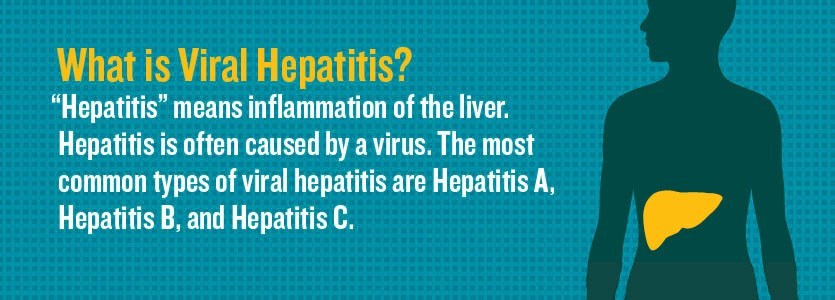 But today, screening tests are performed on all donated blood so this cause has almost been eliminated.
But today, screening tests are performed on all donated blood so this cause has almost been eliminated.
 Sexual transmission of HCV is most likely to happen among gay and bisexual men who are living with HIV.
Sexual transmission of HCV is most likely to happen among gay and bisexual men who are living with HIV.